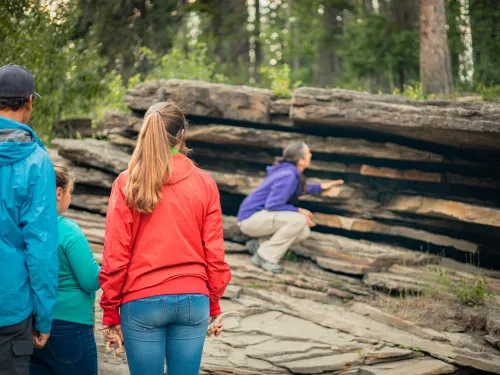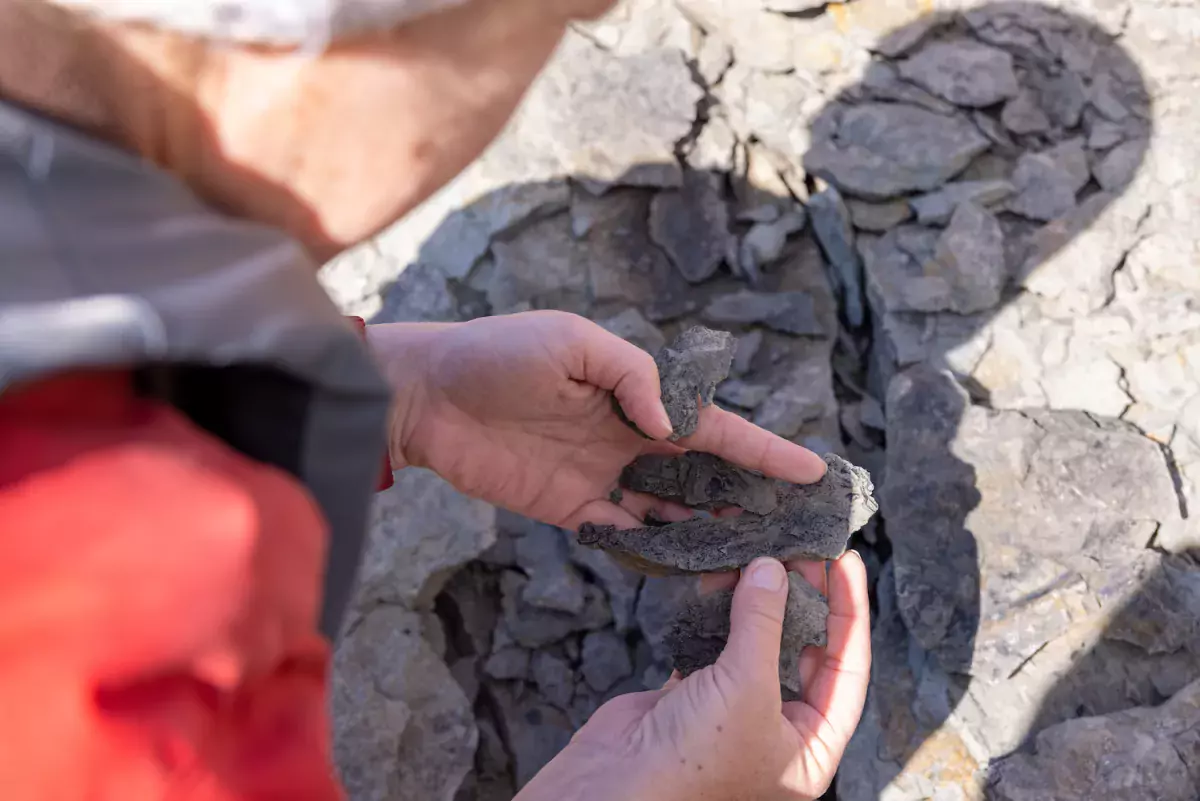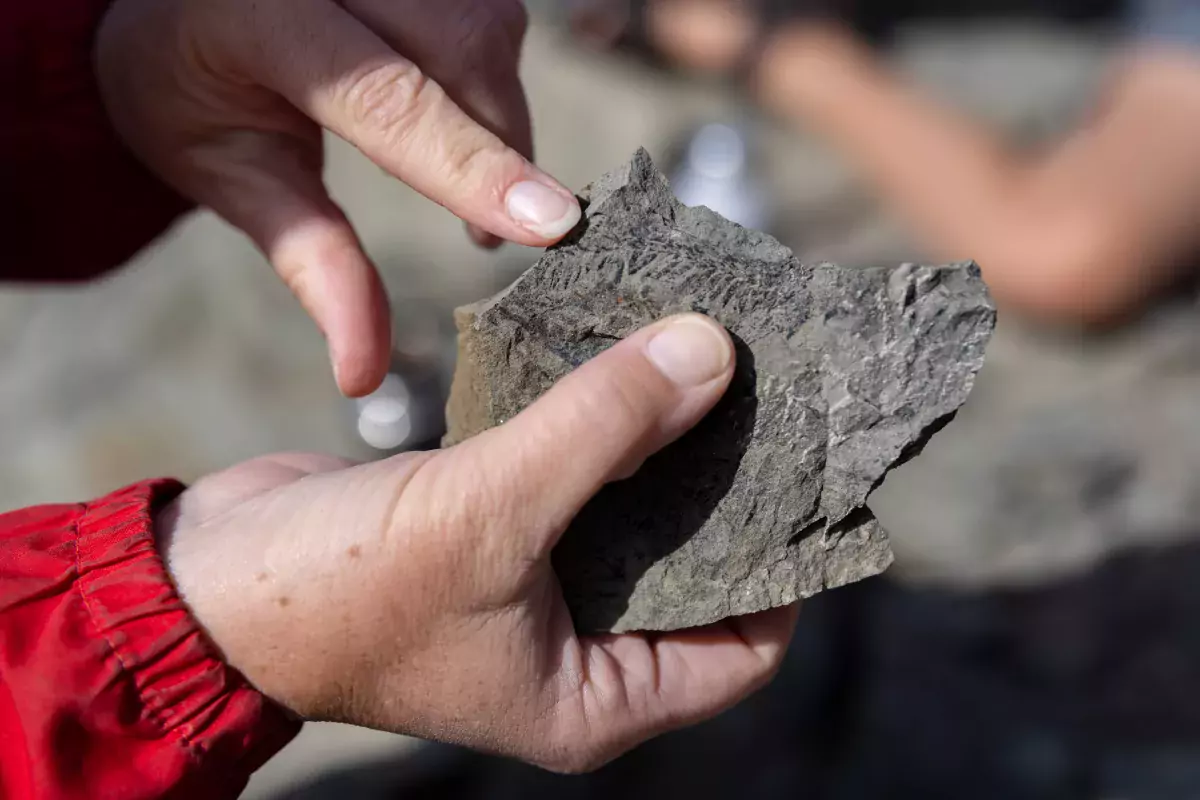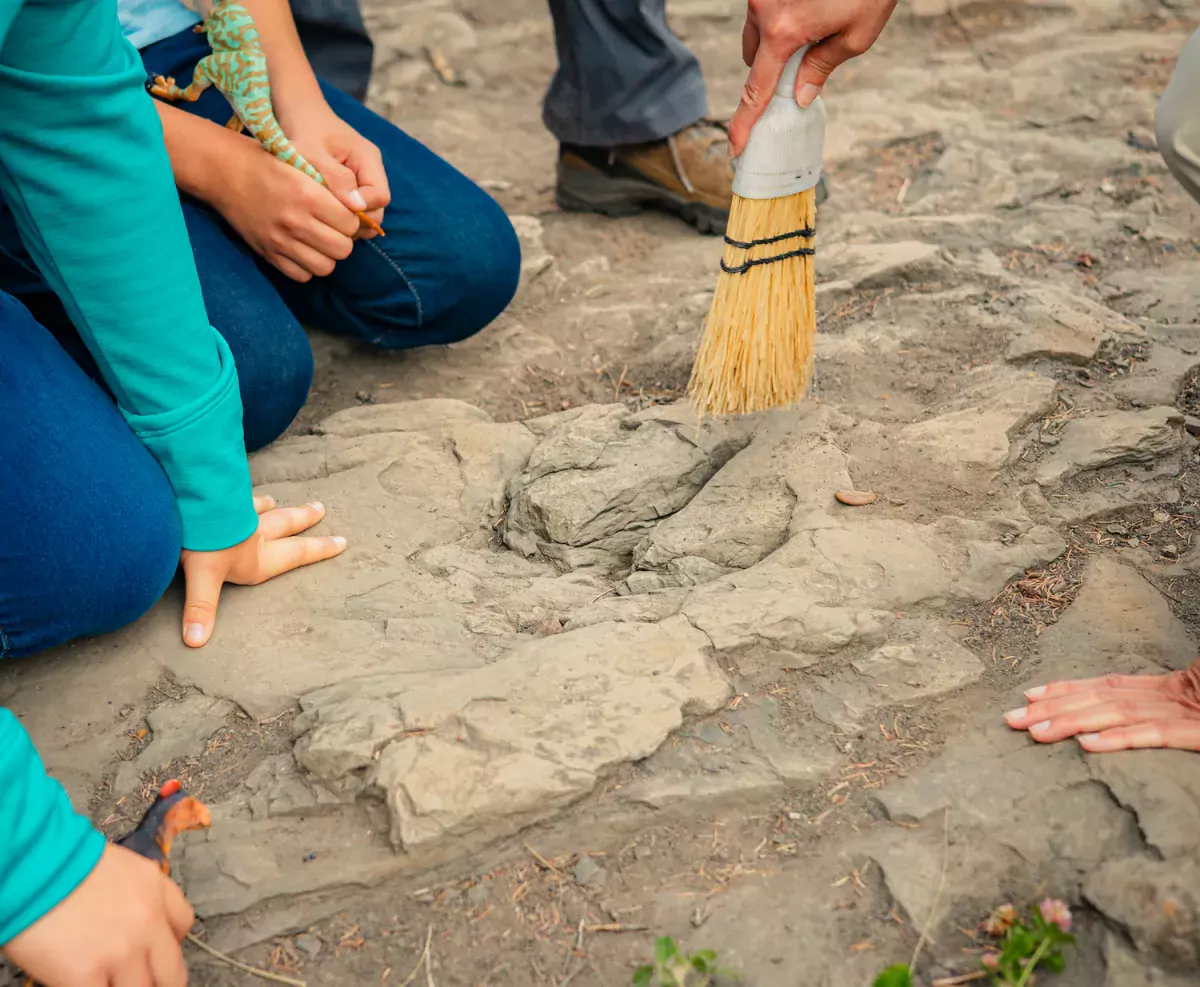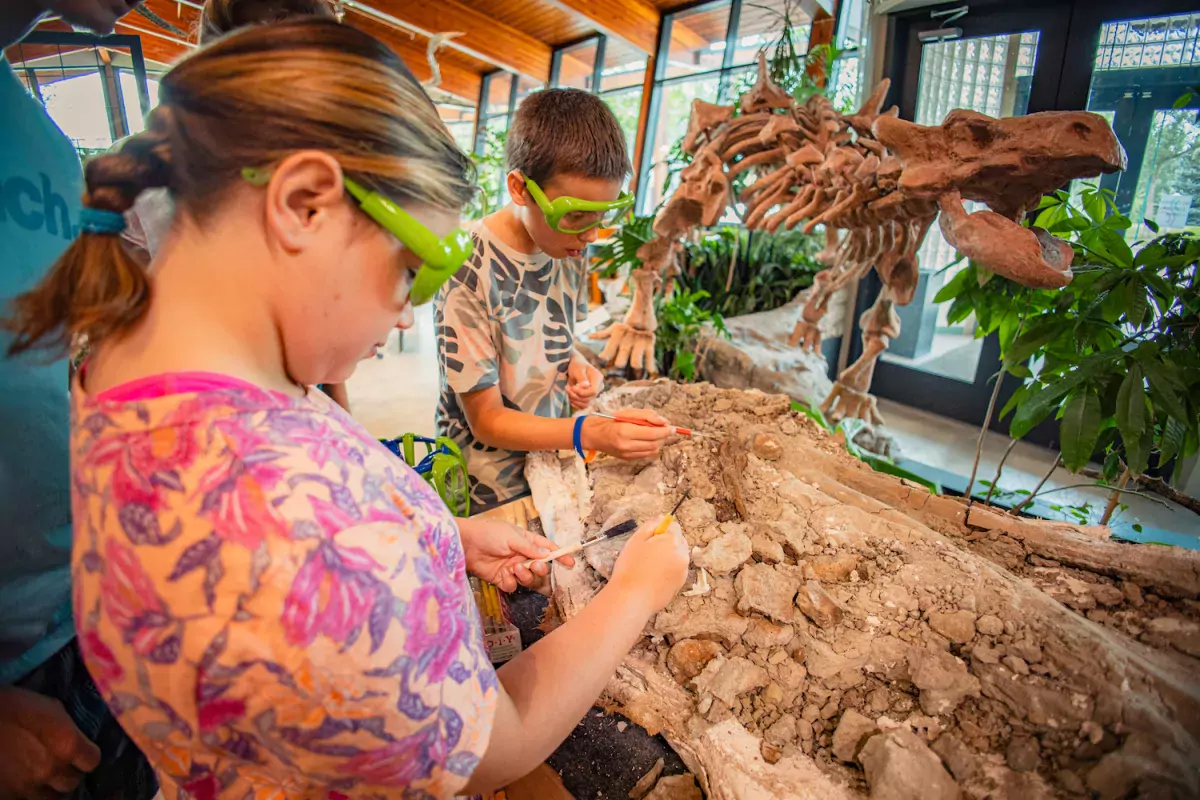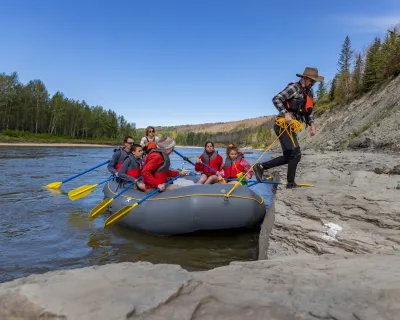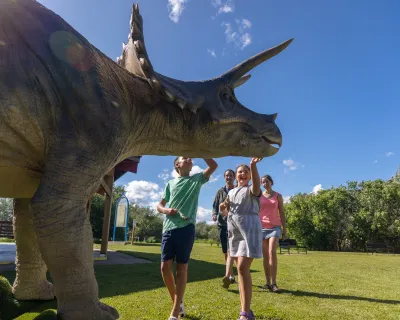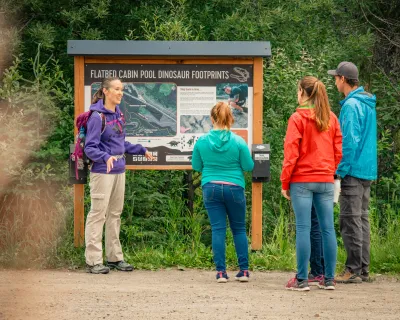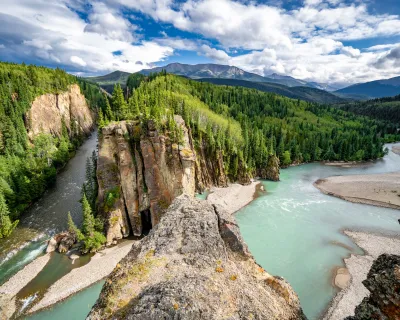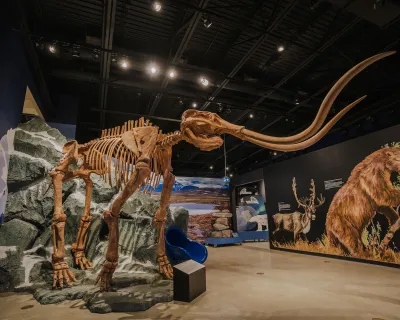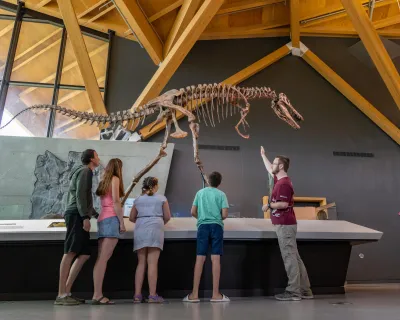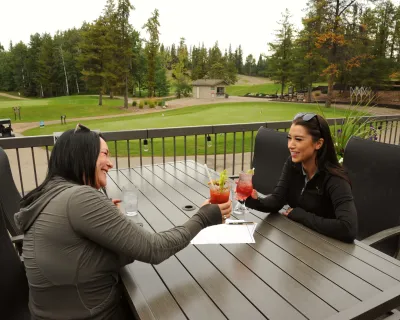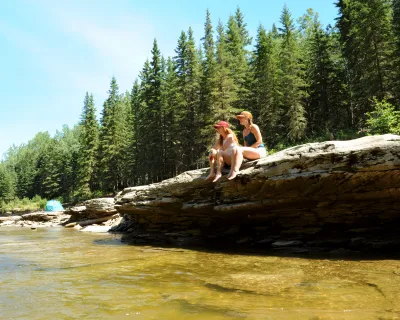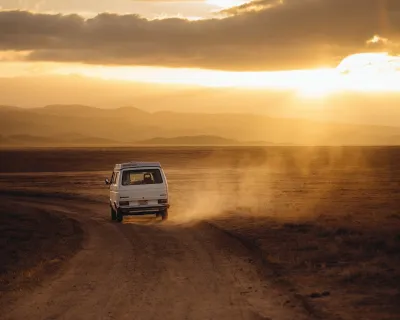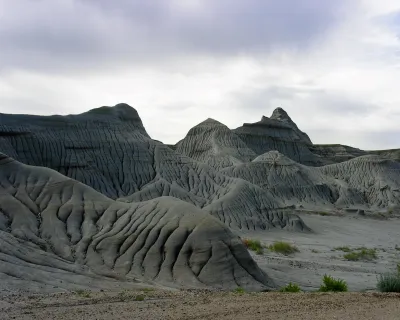Rock or fossil: how to tell the difference
Alberta and BC are rich with dinosaur fossils. Some are cast within rock, others lie loose thanks to soil erosion. You would think their shape alone would give them away, but not necessarily so. So what is the difference between a rock and a fossil, and how can you tell them apart when you’re hiking through dinosaur territory?
With a few tips and tricks to help you identify a fossil, you will be able to know quickly if you are holding the next isopod discovery or if, like Charlie Brown, you just “got a rock.”
Tips to identify fossils
There are two main types of fossils you will find when exploring: fossilised bones or cast fossils.
Depending on which you are dealing with you need different information to properly identify them.
Fossilised bones
There are four things to check when identifying fossil bones and with a little luck, you might discover your first fossilized bone.
Weight
The first place to start when dealing with a bone that you believe may be a fossil is to check the weight.
If it is lightweight you didn’t win this time because that is a recent bone because of minerals that build up in the fossil over time.
If you’ve got a heavy, bone-like object, you may be holding a fossilized bone.
Colour
The next step is to check the colours.
If it is light in colour you are likely dealing with flint or granite, and not a fossil.
But if it is darker you’ve met half of the four key criteria, and it is time for the third test: texture.
Get outdoors, get more connected, get more Zen.
Sign up for ZenSeekers enews for more transformative travel inspiration.
Texture
At this point, you have narrowed it down to a rock, fossilised bone, or petrified wood.
If it is smooth, chances are you’ve got a rock.
But if it is rough, or there are breaks and cracks then it is time for the final test.
Porosity
The final thing to check is if there are holes or pores in the object.
If it has none then you are close, but you have petrified wood.
If it does have holes or pores, then it is time to run to the nearest dinosaur museum because you are dealing with a fossilised bone.
If you're still unsure, there is one more test you can apply: ever licked a fossil?
Here's your chance—the lick test is popularly known as a fossil test, because a slightly wet fossil will often be sticky, whereas rock usually is not. But we recommend skipping this test and going straight to the experts on the #dinotrail.
Cast Fossils
Identifying a potential cast fossil is a bit quicker because it only requires two steps.
The first step is the same as a fossilised bone: check the weight (provided it is loose, and not fixed in the ground).
Weight
If it is heavy, you don’t have a cast fossil and should refer to the steps above.
But if it is lightweight you should move onto the final test: colour.
Colour
If you have a light coloured object, you have a recent bone, not a fossilised bone.
But if it is dark colour you should get that object checked by a professional because it may very well be a cast fossil!
Continue your fossil hunting adventures
It is important to keep in mind that these are only guidelines and not guaranteed methods for checking for fossils.
It can be hard to tell whether something is light or heavy if you haven’t found a fossil before, but with these helpful tips you could help make a miraculous discovery on your next #dinotrail adventure.
Where to hunt for dinosaur fossils
Almost anywhere in Alberta is likely to have dinosaur fossils but creekbeds and riverbeds, badlands and oil rich areas are some of the best to start your search.
Of course, the best way to find fossils is with an expert.
Guided tours and experiences
Philip J. Currie Dinosaur Museum
Royal Tyrrell Museum, Drumheller
And for an over the top dinosaur-filled weekend, head to the Philip J. Currie Dinosaur Museum for Palaeo Palooza 2024.
Whether you find a rock or fossil, you’ve embarked on the exciting new pastime of fossil hunting, which is like a giant, worldwide scavenger hunt combined with a jigsaw puzzle, with the objective to uncover mysteries of ancient earth. How cool is that?
Explore more dinosaur discoveries
Across northern Alberta and BC are a handful of amazing dinosaur discoveries, connecting from Prince George BC to Tumbler Ridge, and into Alberta in Grande Prairie, Wembley, the Philip J. Currie Museum and Grande Cache.
Read on with these stories and get planning a #dinotrail road trip!
Please give us a review
Did you enjoy this article? Did you learn something or get helpful tips for your next adventure? Let us and other prospective zen seekers know with a Google review. Thanks, and happy adventuring.
Like Our Facebook Page
